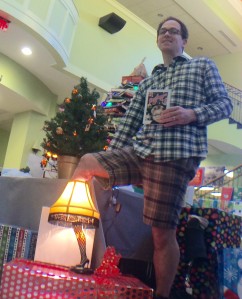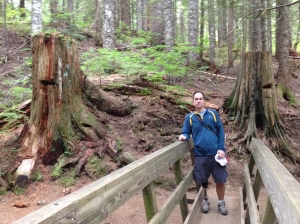On Saturday, I had a high school student come up to the reference desk with her mom.
Her mom said, “Go ahead, ask him.”
“Good morning, can I help?”
“I’m looking for information on Annie Easley.”
Do you know Annie Easley? If you do, I’m impressed. I have never heard of her.
So we went to the OPAC, or Online Public Access Catalog and typed in the name.
0 results
“I found some things on the internet, but I need a book source,” she told me.
So I asked the student, who I will call J, what she had already found out about her. Easley was a scientist, and a mathematician.
“Follow me,” I said, confident that I could find a reference book with her name in it.
I pulled some subject encyclopedias on science, and women in science. Nothing.
Bound and determined to find J. some print on paper, I conducted my reference interview, then grabbed some sources. J and I scanned and skimmed alphabetical entries and indexes. Still nothing.
I learned more about Easley along the way, interviewing J about how she learned about Easley. J was African American, and so was Easley, and it’s February (African American History month), but she was not on a teacher’s list of people to research. Easley was also born in Birmingham, Alabama.
Earlier in the day, I had messaged a fellow student about what librarians without a master’s degree are called.
“Feral Librarians,” Ginny remembered.
I was a feral librarian rabidly interested in finding a book source for this shy, yet curious young student.
“They called her the Human Calculator,” J said, and added that Easley worked for NASA.
Doesn’t she sound like a woman who should be in book about mathematicians and scientists?
J also called her a “programmer.”
I told J, her mom, and now her younger brother, who had joined our tour of reference, that I just learned about this new documentary called, Code: Debugging the Gender Gap.
This documentary shows the large gender and minority gap in the world of science, specifically, computer science. Sadly, our collection was helping prove their argument and this student had done her homework. She knew Easley’s middle initial, “J.” I learned later that Easley actually developed code for NASA.
Walking back to the catalog I asked J to check the general encyclopedias. She confirmed my initial doubt and there was no mention of her in Worldbook, or Encyclopedia Britannica.
“Who is this lady?” J’s little brother now wanted to know, as we grabbed two more books from the stacks. From then on, he joined us in our search.
J’s dad came by, and seeing the stack of books, suggested to his daughter that maybe she needed to find another person.
She was thumbing through a book, and looked over at him. I could tell she was ready to give up.
“No way,” I told the whole family, then looking at J I said, “You need to champion Easley.” I’d gone feral, and decided book sources be damned. “No book sources from the public library, well, use that in your paper,” I said. I smiled, she smiled. Not a Cheshire smile, but the kind of smile that said, “I’m not sure if this librarian is crazy or just more curious than a cat.”
 Some books without Annie Easley
Some books without Annie Easley
“I’m sorry,” I said, frustrated and angry that I could not find a print source for her. This young woman had found a person, an African American like herself and a mathematician, programmer, and NASA employee and my resources failed. The whole family and I went back to the computer and found Easley’s Wikipedia page.
“You stumped the librarian today,” I told them, and was disappointed I did not have a book sources.
J knew about Alabama Virtual Library, but she hadn’t looked at Wikipedia’s sources.
Easley’s Wikipedia page linked to a 55 page PDF from NASA’s “Herstory” Oral history project. The document was the transcript of an interview with Easley about her life.
“That’s better than a book,” I said pointing at the screen, That’s a primary document. This is her own words.” J, and everyone in her family, thanked me. Her dad shook my hand. As they headed to circulation to check out some items, I realized that Wikipedia, libraries, and librarians do not compete. They compliment.
My name in a Textbook
It happened February 13, 2016 at 6:23 Eastern Standard Time. In my second semester of online library school at the University of Alabama.
I was reading Reference and Information Services: An Introduction by Kay Ann Cassell and Uma Hiremath (2013).
On Page 115 it states:
In the past, the stouthearted librarians of the New York Public Library
would prove this time and time again as they ventured into schools to
play the game, “Stump the Librarian.”
















